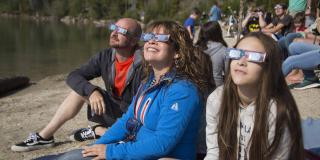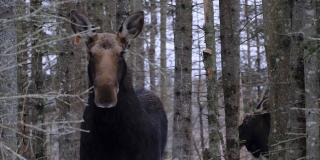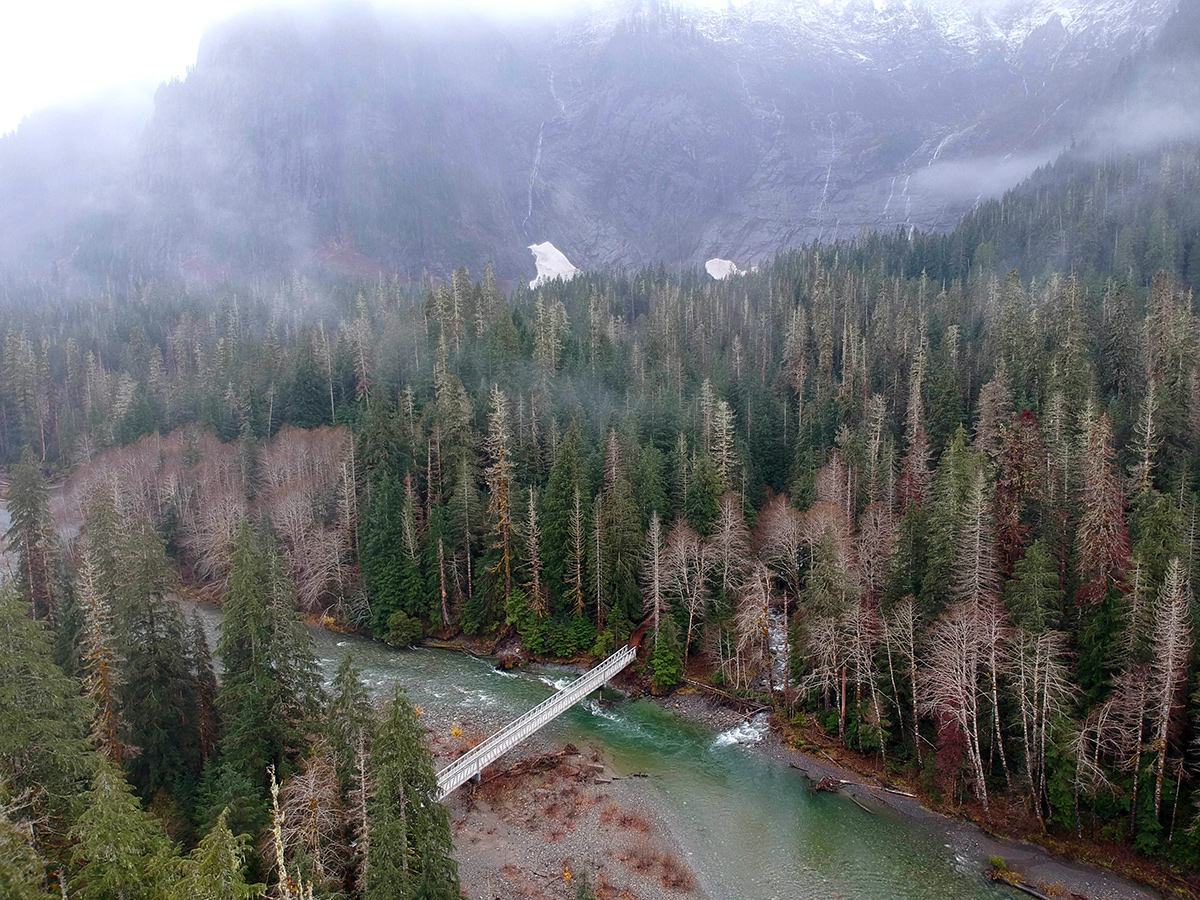
Are you excited, too? A total solar eclipse will cross the United States on April 8, 2024, in a path from Texas through Maine and passing through five national forests.
This will be my third total solar eclipse as a Forest Service owl. The previous two were in 1979 and 2017. After this year’s eclipse, we will not see another total solar eclipse in the United States until 2044. For many, the 2024 eclipse will be a once-in-a-lifetime event.
It’s important to plan ahead. The path of totality – the area where the moon will completely block out the sunlight – will draw millions of people to experience it. Here are six eclipse tips for a safe and enjoyable solar eclipse viewing experience on national forests and grasslands.

Eclipse Tip 1: Know before you go.
It’s a good idea to know exactly where you are going and how to get there. Also, arrive early so you can be set up and comfortable for the big event!
National forests and grasslands in the ‘April 8, 2024, path of totality’ with approximate local times include:
Caddo National Grassland, Texas
1:40 – 1:55 p.m. Central Daylight TimeOuachita National Forest, Arkansas, Oklahoma
1:45 – 2:00 p.m. Central Daylight TimeOzark-St. Francis National Forest, Arkansas
1:45 – 2:00 p.m. Central Daylight TimeMark Twain National Forest, Missouri
1:50 – 2:05 p.m. Central Daylight TimeShawnee National Forest, Illinois
1:55 – 2:10 p.m. Central Daylight TimeHoosier National Forest, Indiana
3:00 – 3:15 p.m. Eastern Daylight Time
These national forests are large. The solar eclipse path of totality may only pass over a portion of the forest. Check the 2024 Total Solar Eclipse through the eyes of NASA map. Each of the forests listed has a link to its main web page for more local information.
National Forests just south of the path of totality – where viewers may camp or visit before and after the eclipse – include the Allegheny National Forest in Pennsylvania, Green Mountain and Finger Lakes National Forest in Vermont and New York, and White Mountain National Forest in New Hampshire.
Learn about the recreation rules, restrictions, fees, and passes that may be required to access and use certain parts of the forest you plan to visit. These rules are in place to protect habitat, wildlife, natural and cultural resources, and you. For more information about visiting and recreation on national forests, visit our know before you go page.

Eclipse Tip 2: Prevent wildfires.
As my friend Smokey Bear says, “Only you can prevent wildfires!” Make sure conditions are safe for building a campfire and that a campfire is allowed where you plan to build it.
Smokey Bear has a Campfire Safety page where you can learn how you can pick a campfire spot, prepare a campfire, build a campfire, and put it out safely.

Eclipse Tip 3: Be considerate of others.
Areas in and near the path of totality will be crowded with hundreds or thousands of excited people. Many of them will travel long distances to an unfamiliar place. Please respect other visitors and protect the quality of their outdoor experience.
When in or around the forest, be courteous to its permanent residents – the wildlife. Let nature's sounds prevail. Avoid loud voices and noises. Do not approach or follow wildlife. Instead, observe them from a distance. Do not feed wildlife because human food can make them sick. Let them feed themselves.Store your food, snacks, and trash safely, securely, and out of reach.
If you bring your dog, please keep it on a leash. This keeps wildlife, other visitors, and your pet safe.

Eclipse Tip 4: Wear eye protection.
If you are in the path of totality, you should bring solar eclipse glasses or a handheld solar viewer to protect your eyes. Before the moon completely covers the sun, only view the sun through eclipse eye protection. When the moon completely covers the sun, you can view the total eclipse with the naked eye. However, as soon as the sun starts to emerge again, use eye protection right away.
For more information on eye safety during the solar eclipse, check out the Eclipse Safety page by our friends at NASA.

Eclipse Tip 5: Look around you.
Although the main event is the total solar eclipse, it only lasts a few minutes. For the rest of the time, enjoy and explore the National Forest around you. There are lots of things to do on a national forest, from hiking and camping to canoeing and birdwatching. You might even see an owl – like me!
Visit our Recreating on National Forests and Grasslands page to learn about some of the many opportunities to enjoy the outdoors. Also, visit the local ranger station or their website to learn about what makes the forest you are on special.

Eclipse Tip 6: Give a hoot – don’t pollute!
Please help me spread the word to never be a dirty bird.
Like the eclipse comes and goes, leaving no trace – so should we. Learn to Leave No Trace. For the local wildlife, this is the most important tip!
Pick up any garbage from your viewing site and put it in the nearest recycling or garbage receptacles. Let’s keep America clean and looking grand. Be prepared to “pack out” whatever you “pack in” to your viewing site.
See you soon!
My friends and I at the Forest Service look forward to seeing you on April 8 for the 2024 total solar eclipse. Hoot! Hoot!






